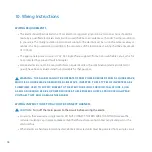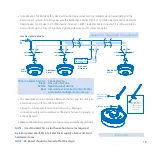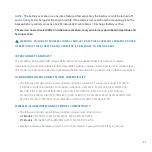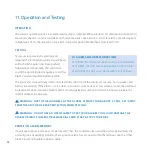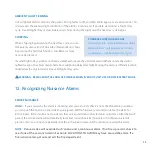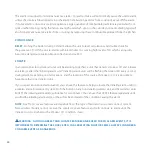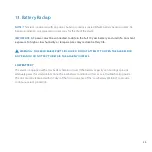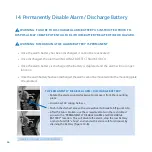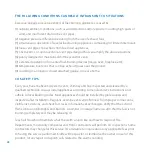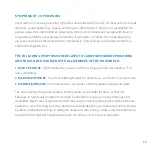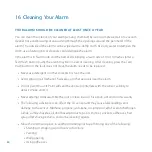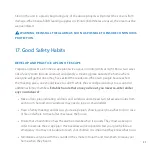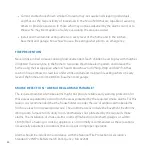
32
•
Current studies have shown smoke/CO alarms may not awaken all sleeping individuals,
and that it is the responsibility of individuals in the household that are capable of assisting
others to provide assistance to those who may not be awakened by the alarm sound, or to
those who may be incapable of safely evacuating the area unassisted.
•
Install and maintain fire extinguishers on every level of the home and in the kitchen,
basement and garage. Know how to use a fire extinguisher prior to an emergency.
FIRE PREVENTION
Never smoke in bed, or leave cooking food unattended. Teach children never to play with matches
or lighters! Train everyone in the home to recognize the smoke alarm pattern and to leave the
home using their escape plan when it’s heard. Know how to do “Stop, Drop and Roll” if clothes
catch on fire, and how to crawl low under smoke. Install and maintain fire extinguishers on every
level of the home and in the kitchen, basement and garage.
SMOKE DETECTION – ARE MORE ALARMS DESIRABLE?
The required number of smoke alarms might not provide reliable early warning protection for
those areas separated by a door from the areas protected by the required smoke alarms. For this
reason, it is recommended that the householder consider the use of additional smoke alarms
for those areas for increased protection. The additional areas include the basement, bedrooms,
dining room, furnace room, utility room, and hallways not protected by the required smoke
alarms. The installation of smoke alarms in attics (finished or unfinished), garages, or within
1.8 m (6 ft) of a heating or cooking appliance is not normally recommended, as these locations
occasionally experience conditions that can result in improper operation.
Alarms should be installed in accordance with the National Fire Protection Association’s
Standard 72 (NFPA, Batterymarch Park, Quincy, MA 02269).

